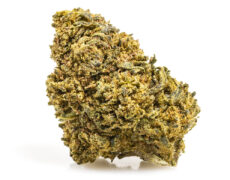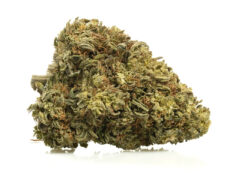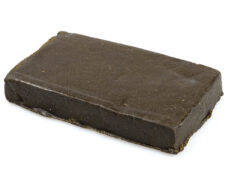Published on: 13/11/2025
The referral issued by Italy’s highest administrative court opens a decisive path that could overturn years of uncertainty, restrictions and legal contradictions
Italy has found itself at the center of a dispute that has lasted for years, revolving around industrial hemp, an agricultural sector that has grown rapidly thanks to rising demand for CBD products and low-THC hemp flowers.
The supply chain involves thousands of businesses and, across most of Europe, operates under clear rules: hemp from certified varieties is treated as an ordinary agricultural product. In Italy, however, the regulatory landscape has become increasingly confused. Contradictory laws, legal appeals, product seizures and court rulings have produced a paradox in which a product considered legal in many EU member states is instead treated as a narcotic.
In this complex situation, the Italian Council of State (which is the country’s highest administrative court) has decided to refer the most controversial question to the Court of Justice of the European Union: when hemp flowers come from certified varieties and contain minimal THC, are they agricultural products protected under EU law, or can they be banned as if they were narcotics?
The answer will shape the future of the Italian hemp sector and determine whether its legal framework is consistent with that of other EU countries.
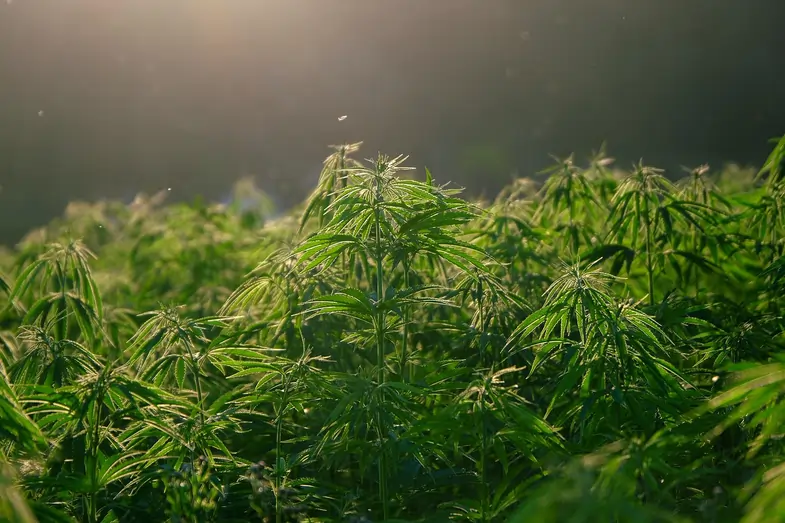

The long genealogy of a conflict: how the case reached the EU Court
The dispute began in 2022, when the Conferenza Stato-Regioni (the national body where the central government and regional authorities coordinate legislative matters) approved a decree classifying hemp as an officinal plant and limiting its use to fiber and seeds. The measure was introduced under the Draghi government and appeared to be a technical update, yet it soon became the starting point of a legal confrontation.
Several major associations, including Canapa Sativa Italia, Federcanapa, Sardinia Cannabis and Resilienza Italia, challenged the decree before the TAR Lazio (a regional administrative court). They argued that there was no scientific basis for banning the flowers of cannabis sativa when they come from certified varieties with low THC levels.
In February 2023 the TAR ruled in their favor, annulling the section of the decree that restricted plant uses and stating that a generic reference to the precautionary principle cannot be accepted without scientific evidence. The court relied on previous European rulings, including the 2020 Kanavape judgment, which recognized CBD as a non-narcotic substance and confirmed that CBD-based products can circulate freely within the EU.
When the Meloni government took office, the Ministries of Agriculture, Environment and Health appealed the ruling, reopening a dispute that had become even more complex. A new Security Decree had introduced a general ban on hemp flowers, treating them as narcotics regardless of THC content.
Within this context, the Council of State examined the case and reached a conclusion that diverged from the government’s position.
The legal knots that led the Council of State to seek clarification from the EU Court
The Council of State’s order highlights a series of inconsistencies that cannot be resolved within the Italian system without European guidance.
The judges began with a fundamental point often overlooked in political debate: EU law does not distinguish between different parts of the hemp plant. It does not separate fiber and seeds from leaves and flowers. The same certified varieties are used, and the THC limit set by EU rules applies to the entire plant.
This raises the first central question: can a member state prohibit the use and sale of hemp flowers when they come from certified varieties and comply with the THC thresholds established by the EU?
The risk of violating Articles 34 and 36 of the Treaty on the Functioning of the European Union, which protect the free movement of goods, is evident. With THC levels described as “extremely low”, the justification based on the protection of public health becomes weak and disproportionate.
The second issue concerns Italy’s narcotics legislation. According to the Testo Unico sugli Stupefacenti (the national law governing narcotics), flowers, leaves, oils and resins are included in Schedule II without any threshold of allowed THC.
This absolute classification is in tension with the Common Agricultural Policy, with EU competition rules and with several EU Court of Justice rulings that state clearly that CBD is not a psychotropic substance. The overlap between agricultural law and drug law is at the origin of the current regulatory deadlock, which now moves to the Court of Justice.
Immediate effects and possible scenarios: what changes for businesses and courts
The referral to Luxembourg has an immediate consequence: it suspends the Italian proceedings.
The Council of State will not issue a final ruling until the EU Court provides its interpretation. The effects, however, are likely to extend to other courts as well. Civil, criminal and administrative judges may also suspend their cases, waiting for the binding interpretation that will come from Europe.
According to attorney Giacomo Bulleri, who represents the associations behind the appeal, this suspension may create a domino effect: many ongoing cases could be grouped together or temporarily frozen, reducing the risk of convictions or seizures that could later prove unjustified.
The economic implications are significant. The Italian hemp sector includes thousands of businesses and tens of thousands of workers across agriculture, cosmetics, herbal products, supplements and horticulture.
A general ban on hemp flowers, which are widely sold in the rest of Europe, penalizes a market that, paradoxically, first developed in Italy in 2017. Demand across the EU is strong and continues to grow, while Italy’s uniquely restrictive approach risks isolating a sector that other countries treat as part of agriculture.
Meanwhile, in Brussels, the European Parliament has approved an amendment that includes hemp flowers and leaves among agricultural products regulated under the Common Market Organization. The reform, initially planned for 2028, may now come into effect in 2026. It is a political signal that aligns with the doubts expressed by the Council of State and widens the gap between European policy trends and Italy’s restrictive stance.
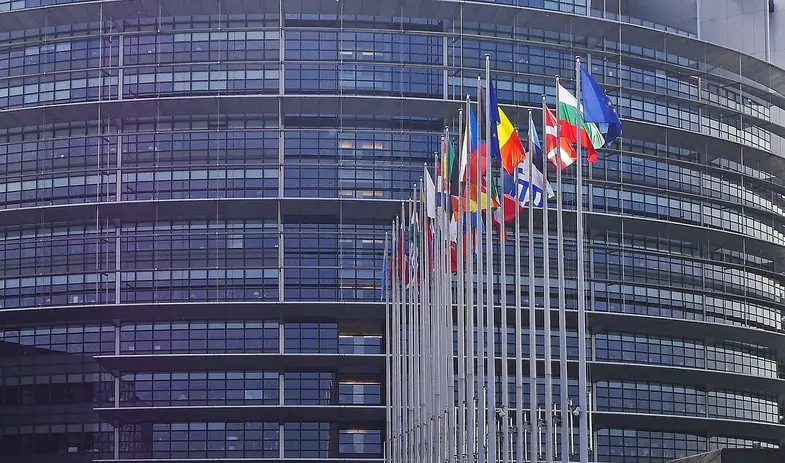

A test of European coherence: what is at stake goes beyond hemp
The decision of the Court of Justice will not affect only the hemp market. It will clarify whether a member state can impose restrictions on an agricultural product that EU rules place within the free internal market.
If the Court identifies a conflict between Italian rules and EU law, the incompatible parts of the Italian legislation will be automatically disapplied. This is not a political decision but a mechanism provided for by EU treaties: EU law prevails over national law when the latter conflicts with principles such as the free movement of goods and the proportionality of restrictions.
This is why the Council of State’s referral has a broader meaning. The case sheds light on a deeper tension between national policies and EU obligations. On one side stands an innovative agricultural sector recognized across Europe. On the other side stands an Italian legal framework that continues to classify hemp flowers as narcotics without considering THC levels or scientific evidence.
An opportunity to bring clarity back to a distorted debate
The involvement of the Court of Justice will provide a more solid legal foundation than the legislative swings seen in recent years.
Whatever the outcome, Italy will have to confront years of contradictions that have confused businesses, consumers and institutions. If the EU confirms that industrial hemp is an agricultural product, as already indicated by several regulations and rulings, it will become increasingly difficult to justify seizures, criminal cases and blanket bans on hemp flowers and CBD.
In the coming months, Italy will face a principle that has long remained in the background: agricultural policy and narcotics policy cannot overlap without generating significant distortions.
The ruling from Luxembourg will be a turning point. It may also mark the beginning of a more rational and less ideological approach, one capable of recognizing a sector that is simply asking for clear, consistent and well-founded rules.
That’s all for now. We will keep you updated on developments in this story here on Justbob!
Italy’s Hemp War Reaches Europe: takeaways
- The decision of the Italian Council of State to refer the case to the Court of Justice highlights a deep inconsistency between national legislation, which continues to treat hemp flowers as narcotic substances, and EU law, which classifies certified-variety hemp as an agricultural product subject to free movement. This contrast exposes a regulatory framework that struggles to align with the principles of the European internal market.
- The referral to Luxembourg suspends the Italian proceedings and may prompt many civil, criminal, and administrative courts to pause related cases. For a sector made up of thousands of businesses, this means a reduced risk of seizures and sanctions while awaiting a European ruling that could reshape the entire hemp supply chain.
- The Court of Justice’s future decision will extend beyond the hemp market: it will define how far a Member State may go in restricting an agricultural product recognized under EU law. If national rules are found incompatible with EU principles, they will no longer be enforceable, paving the way for a clearer, more coherent regulatory framework aligned with proportionality and free movement.
Italy’s Hemp War Reaches Europe: FAQ
Why did the Italian Council of State refer the hemp flowers case to the Court of Justice of the European Union?
The Council of State referred the matter to the Court of Justice because Italian restrictions on hemp flowers may violate EU law. European legislation treats industrial hemp as an agricultural product without distinguishing between seeds, fibers, leaves and flowers. Banning flowers from certified low-THC varieties may unjustifiably restrict the free movement of goods and is considered disproportionate to the goal of safeguarding public health.
What immediate effects does the Council of State’s referral have on the Italian hemp market?
The referral suspends the ongoing case and will likely prompt many Italian courts to pause similar proceedings until the EU Court provides a binding interpretation. This reduces the risk of seizures and convictions in a sector already marked by legal uncertainty. The economic repercussions are considerable, as thousands of companies rely on hemp flowers and related products.
What could happen if the Court of Justice rules against the Italian restrictions on hemp flowers?
If the EU Court rules that hemp flowers with minimal THC content are agricultural products protected by EU law, national rules that contradict EU principles must be disapplied. This would eliminate blanket prohibitions, require Italy to align its legislation with the Common Agricultural Policy and the free movement of goods, and finally bring coherence to a sector heavily affected by regulatory inconsistencies.


